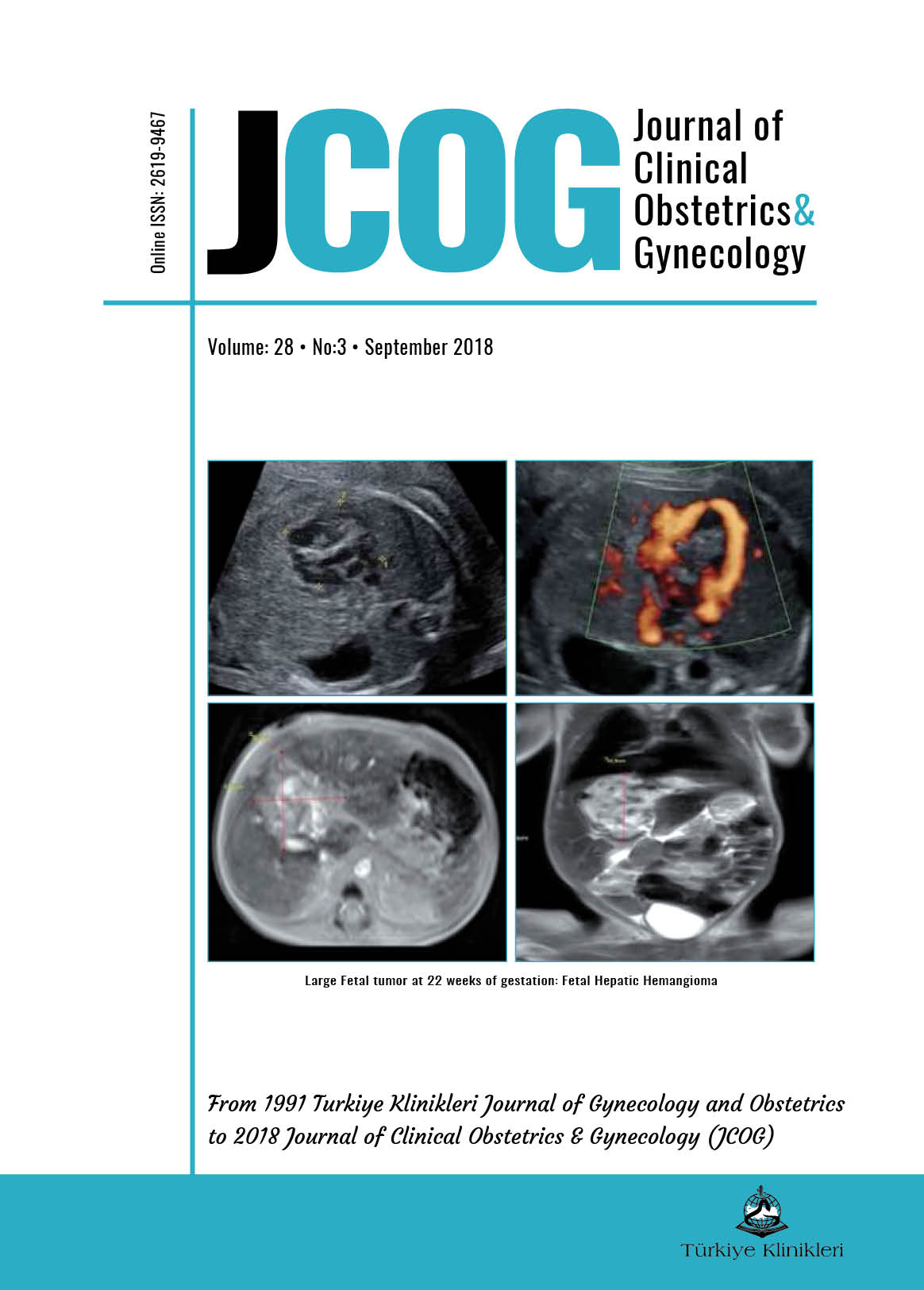Open Access
Peer Reviewed
ORIGINAL RESEARCH
2713 Viewed1481 Downloaded
Diagnostic Accuracy of Ultrasonography and Magnetic Resonance Imaging in the Assessment of Placenta Previa Accreta
J Clin Obstet Gynecol. 2018;28(3):105-11
DOI: 10.5336/jcog.2018-61838
Article Language: EN
Article Language: EN
Copyright Ⓒ 2025 by Türkiye Klinikleri. This is an open access article under the CC BY-NC-ND license (http://creativecommons.org/licenses/by-nc-nd/4.0/)
ABSTRACT
Objective: The present study evaluated the ability of magnetic resonance imaging (MRI) andultrasonography (US) in diagnosing placenta accreta in cases of anteriorly localized placenta previa with a high risk of placental adhesion abnormality. Material and Methods: A total of 29 patients with anteriorly localized placenta previa and having at least one risk factor for placenta accreta underwent US and MRI. Diagnostic ability of both modalities for the prediction of abnormal placental invasiveness was assessed using various imaging signs described in the existing literature. Results: Of the 29 pregnancies with placenta previa, 13 (44.8%) had placenta accreta that was confirmed at the time of surgery. Cesarean hysterectomy was performed in seven (53.8%) cases. Sensitivity, specificity, and diagnostic accuracy of ultrasound and MRI were calculated to be 84.6%, 81.2%, and 82.7% and 100%, 76.9%, and 86.2%, respectively. In 5 of 29 cases, US and MRI had discordant diagnoses; sonography detected placenta accreta in 2 cases, whereas magnetic resonance imaging predicted it in 3 cases. Conclusion: The diagnostic abilities of ultrasound and MRI for the detection of placenta accreta appear to be comparable. Magnetic resonance imaging may be required to plan the surgical approach and assess the risk of potential surgical morbidity.
Objective: The present study evaluated the ability of magnetic resonance imaging (MRI) andultrasonography (US) in diagnosing placenta accreta in cases of anteriorly localized placenta previa with a high risk of placental adhesion abnormality. Material and Methods: A total of 29 patients with anteriorly localized placenta previa and having at least one risk factor for placenta accreta underwent US and MRI. Diagnostic ability of both modalities for the prediction of abnormal placental invasiveness was assessed using various imaging signs described in the existing literature. Results: Of the 29 pregnancies with placenta previa, 13 (44.8%) had placenta accreta that was confirmed at the time of surgery. Cesarean hysterectomy was performed in seven (53.8%) cases. Sensitivity, specificity, and diagnostic accuracy of ultrasound and MRI were calculated to be 84.6%, 81.2%, and 82.7% and 100%, 76.9%, and 86.2%, respectively. In 5 of 29 cases, US and MRI had discordant diagnoses; sonography detected placenta accreta in 2 cases, whereas magnetic resonance imaging predicted it in 3 cases. Conclusion: The diagnostic abilities of ultrasound and MRI for the detection of placenta accreta appear to be comparable. Magnetic resonance imaging may be required to plan the surgical approach and assess the risk of potential surgical morbidity.
MENU
POPULAR ARTICLES
MOST DOWNLOADED ARTICLES





This journal is licensed under a Creative Commons Attribution-NonCommercial-NoDerivatives 4.0 International License.










